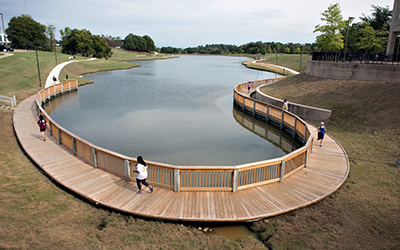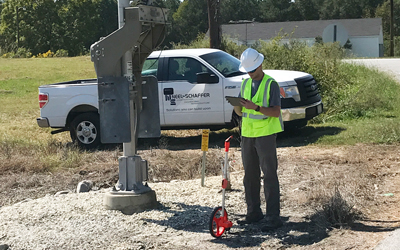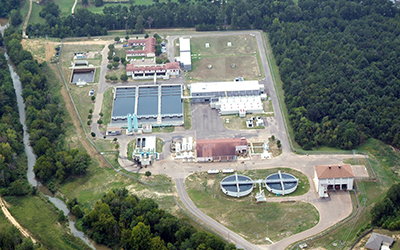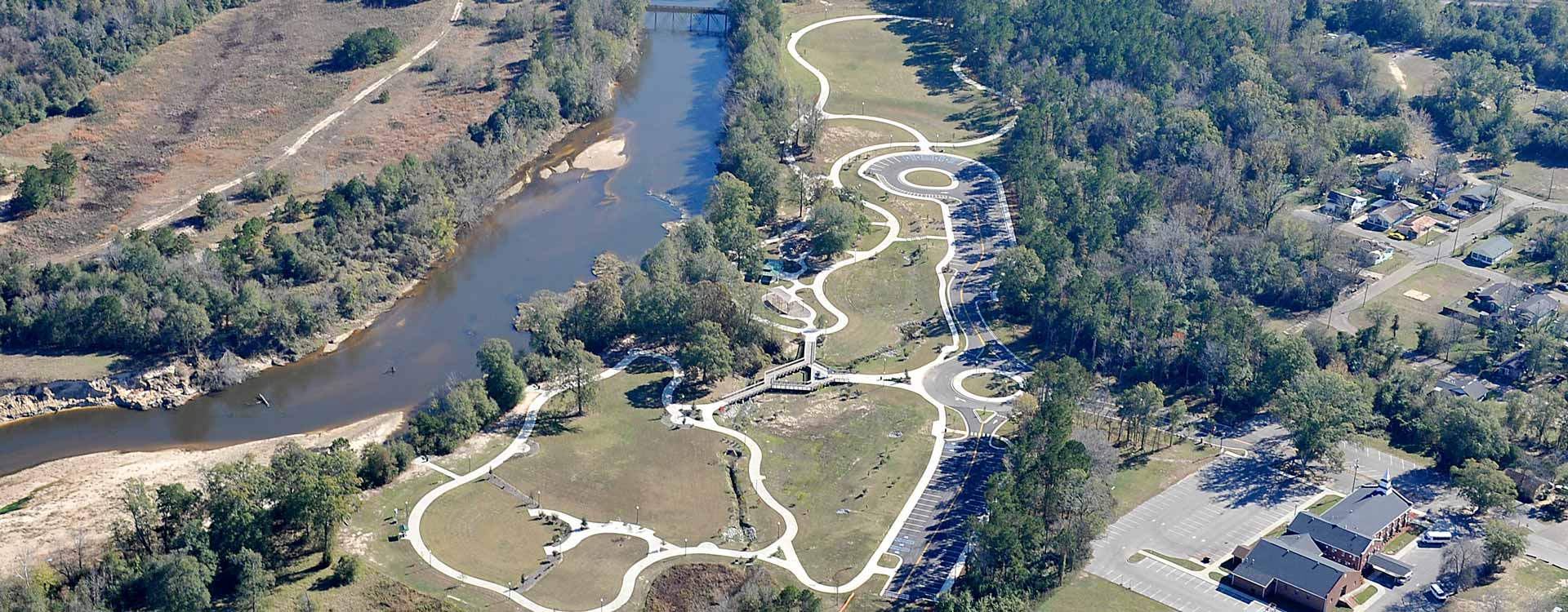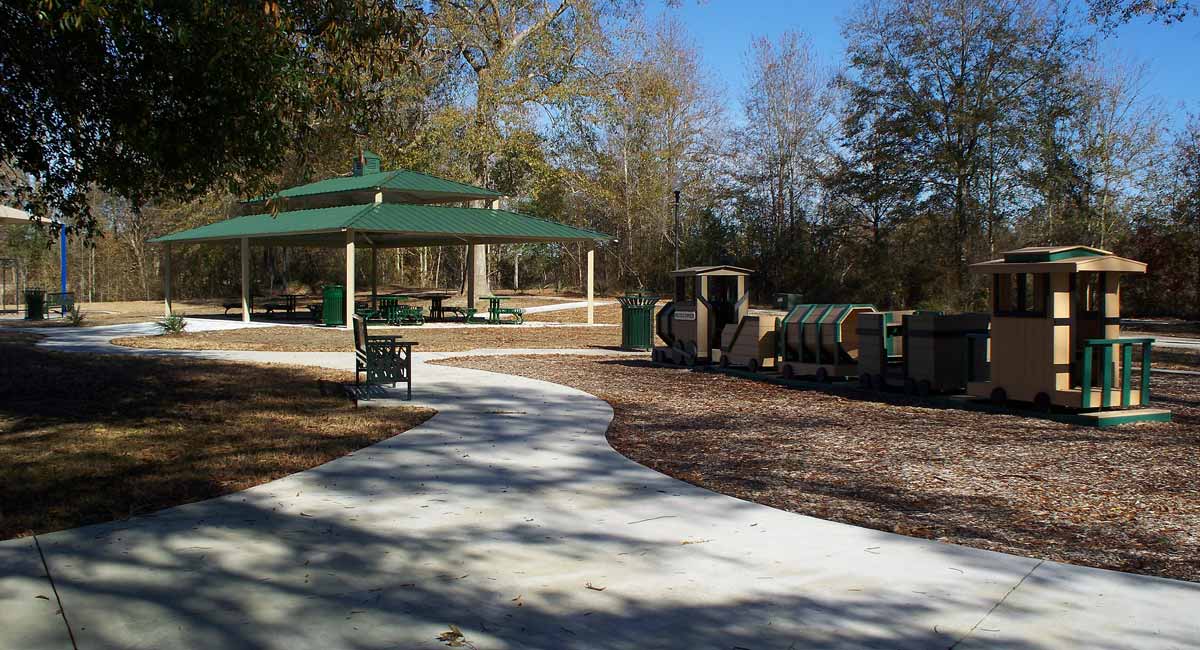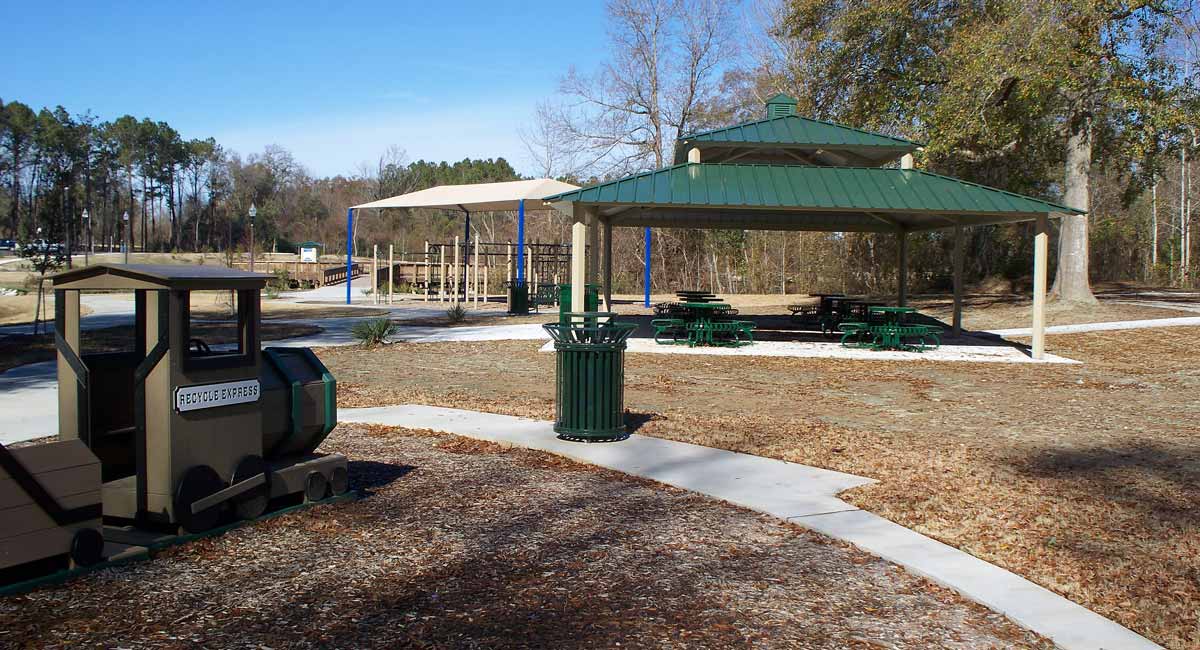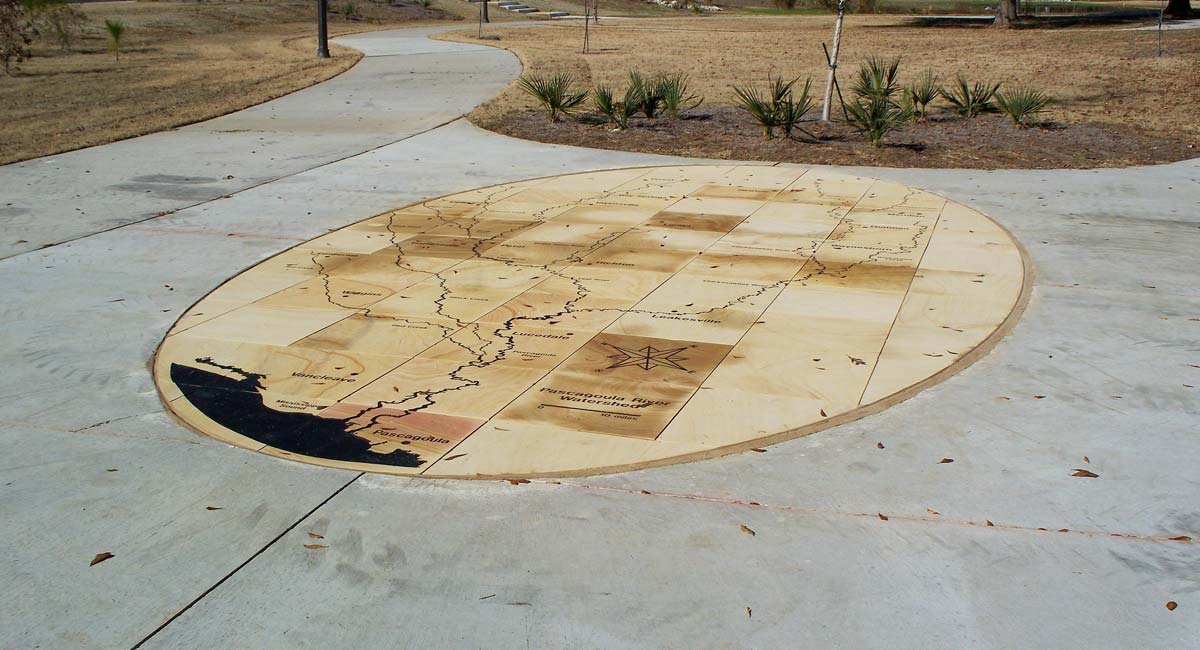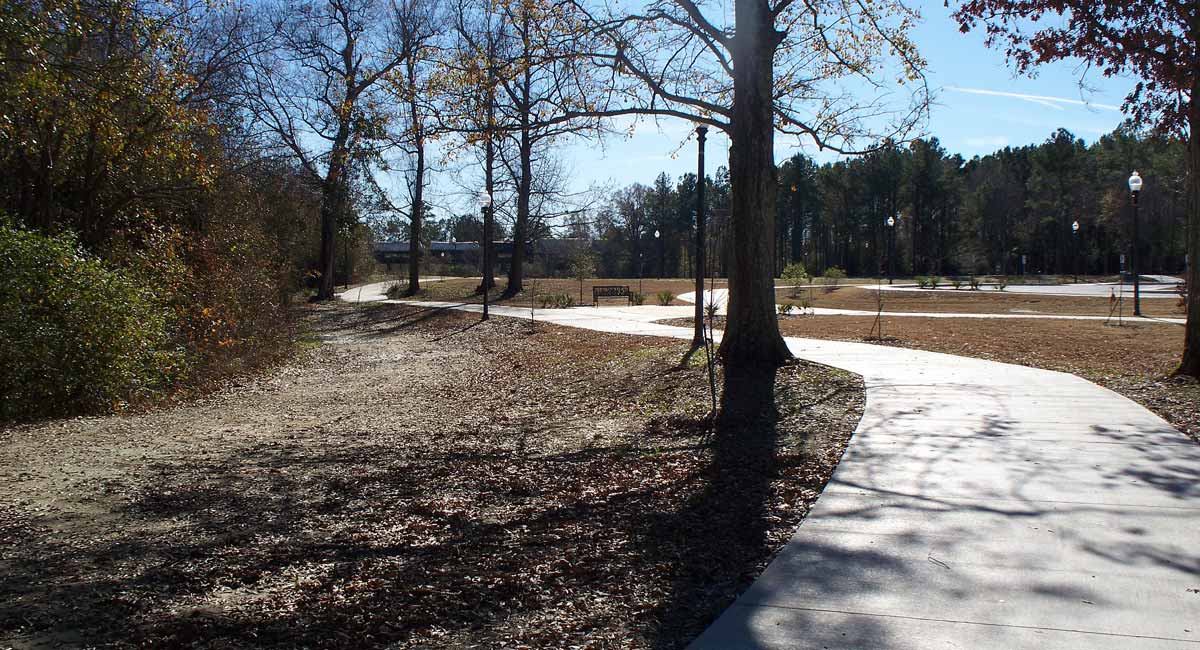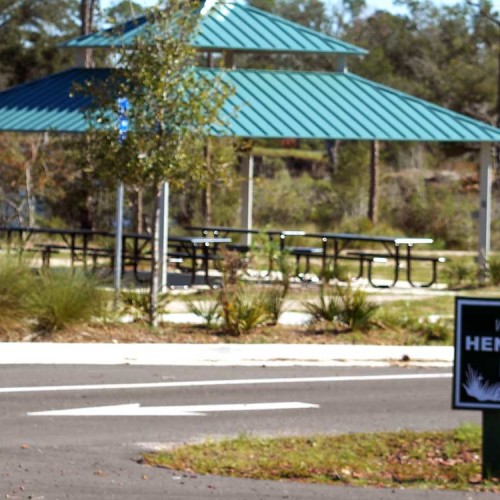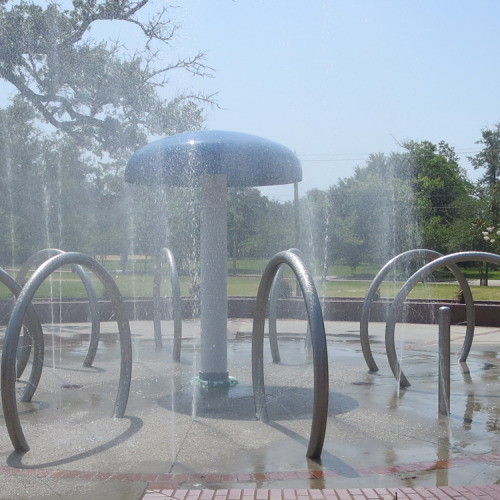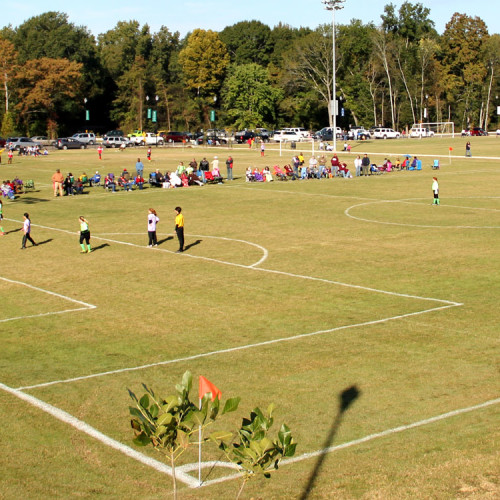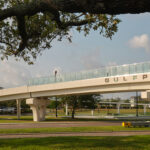HATTIESBURG, MS
Building a better park from the ground up
Neel-Schaffer provided engineering design and construction, landscape architecture, and environmental services for the construction of 37-acre Chain Park at Twin Forks in Hattiesburg.
Funded by Transportation Enhancement Grant through the Mississippi Department of Transportation, and the CDBG program, the $2.2 million project was completed in four phases from 2007 through 2014.
In 2007, Neel-Schaffer completed a master plan for the site along the Leaf River. Prior to the design phase, Neel-Schaffer completed Wetland Delineation and Phase I Environmental Assessments for the proposed park. The project was divided into four phases that include amenities such as a walking path and sidewalks that are ADA compliant, five exercise stations, two children’s play equipment components, 69 parking spaces (including handicapped parking with access aisles), and a shaded rest area.
It also features an information kiosk, benches, a boulevard entry, and trash receptacles.
An elevated boardwalk was specially designed by a Neel-Schaffer structural engineer to account for the site’s proximity to the river and the threat of flooding. Landscaping includes a maintenance-conscious plan for the park that includes wildflower and native grass areas to help control pedestrian circulation and minimize mowing.
In 2011, Neel-Schaffer provided design and construction engineering services for the third phase, funded by CDBG funds. This phase included approximately 1,600 linear feet of two-lane access roadway with curb and gutter and drainage improvements, striping and signage, sidewalks, entrance sign, and landscaping improvements. The new roadway provides improved vehicular and pedestrian access to Chain Park.
The final phase was completed in 2013, when a portable restroom trailer was added to the park. Neel Schaffer designed the driveway, parking area, concrete deck with handrails, and the utilities for the restroom trailer. The restroom project was designed in compliance with ADA requirements and was funded by the CDBG program.


